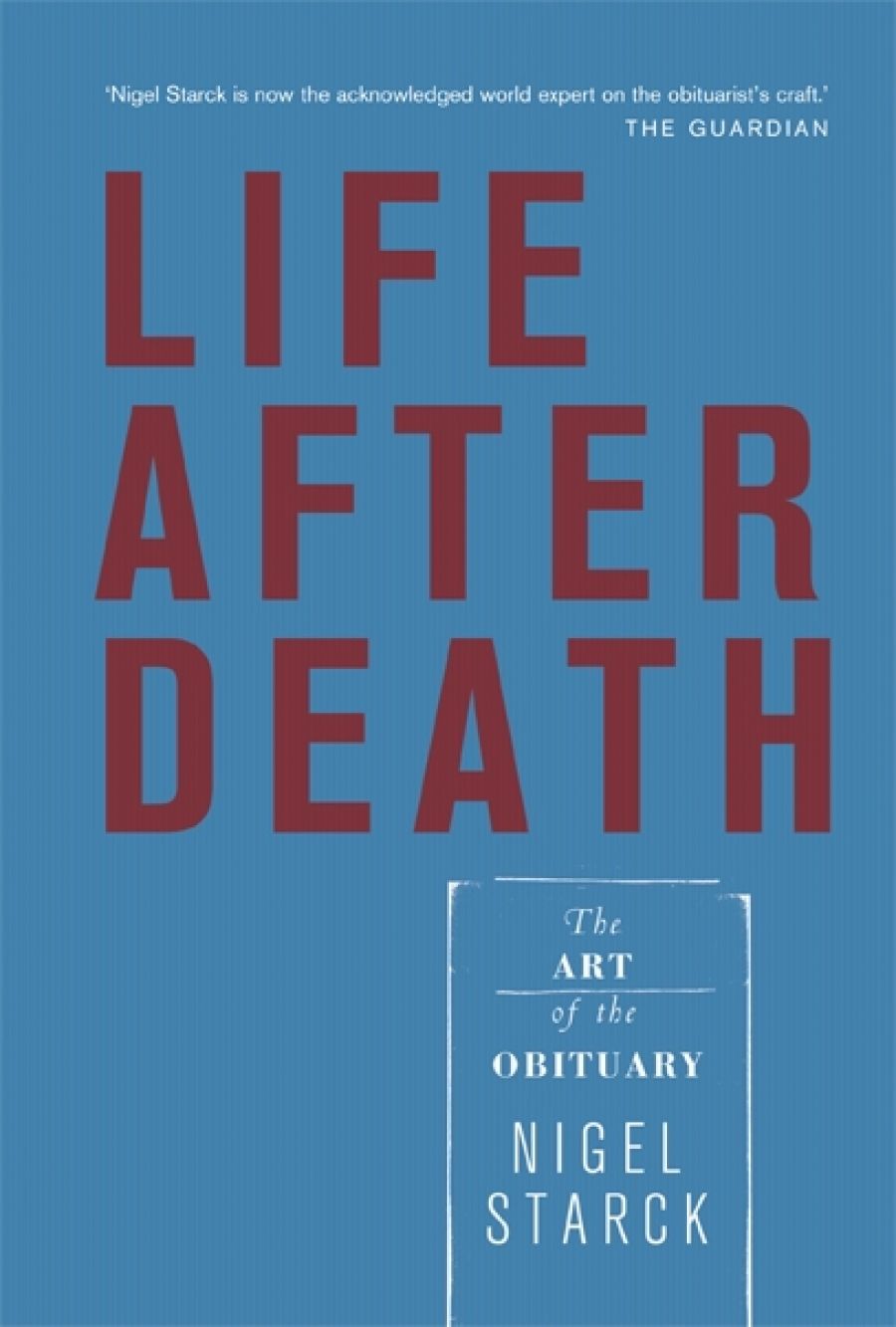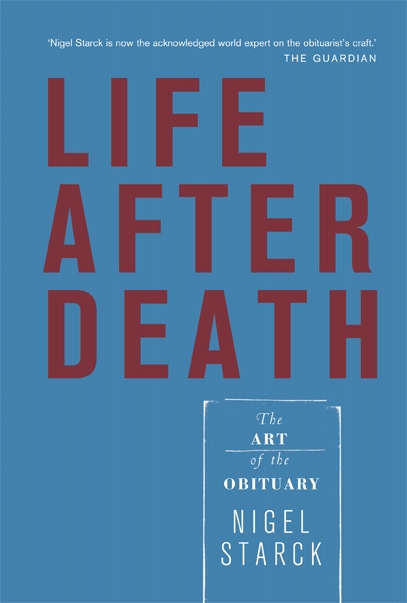
- Free Article: No
- Custom Article Title: Mother knows best
- Review Article: Yes
- Article Title: Mother knows best
- Online Only: No
- Custom Highlight Text:
Nigel Starck has read a lot of obituaries. His doctoral thesis was on the obituary and newspaper practice, and he teaches obituary composition in South Australia. This book, though, rarely rises above the commonplace. I suspect it is written as a text for students; the final chapter is ‘How to Write Obituaries’. Even students would find the content fairly undemanding. A chapter telling us that those who have their obituaries published are the famous, those who did famous things, those who associated with the famous, national heroes, villains and eccentrics is not rocket science.
- Book 1 Title: Life After Death
- Book 1 Subtitle: The art of the obituary
- Book 1 Biblio: MUP, $32.95 hb, 272 pp, 0522852564
- Book 1 Cover Small (400 x 600):

- Book 1 Cover (800 x 1200):

The book opens with a history of the newspaper obituary in English. The earliest extant obituary was that of a Captain Andrew Shilling, a ship’s master, and was published in England on 2 July 1622. In a departure from previous practice, this did not simply report Shilling’s death but provided a description of his life as well as some assessment of his character. The eighteenth century saw a great exponent of the art in The Gentleman’s Magazine, which was founded in 1731, though its great days of authoritative obituary date from 1780. It covered the entire nineteenth century, not ceasing publication until 1907. It remains today an important reference work. These obituaries were not only of the great and the good but included those who had transgressed against society.
The first obituary published in Australia, that for Samuel McDonald of the 93rd Regiment, appeared in our first newspaper, the Sydney Gazette, in its second number, in March 1803. It was reprinted from a British newspaper. The first obituary of a local appeared, also in the Sydney Gazette, on 25 March 1804. It was for the building superintendent James Bloodworth.
The newspaper obituary, according to Starck, declined after World War I and did not revive until the mid-1980s. The Times was the great exception, keeping the flame burning. Starck suggests some reasons for this decline: one was that in the face of the slaughter in the trenches, people did not wish to read about lives lived safely and profitably. Another reason he advances is that there was a shift in the 1920s from the reflective journalism of the Victorian and Edwardian periods towards a more popular approach aimed at a mass market. These reasons are stated without any supporting argument.
The revival in Britain was spearheaded by Hugh Massingberd at the Daily Telegraph. As Starck writes: ‘subject selection was to be driven by the quality of the life story, rather than by the rank of the individual.’ At the same time, at the recently established Independent, James Fergusson revolutionised the use of photography on the obituary page, while at The Times the obituary of our own Robert Helpmann in 1986 ushered in a period of frankness about sexual life. This revival was transported to Australia, with our major dailies revamping their coverage of the dead. In the United States, the revival seems to have happened a little earlier. Starck gives only a sketchy outline of the situation there.
The book’s subtitle, ‘The Art of the Obituary’, claims too much. Starck only discusses obituaries in English. We are left in ignorance of the history and practice in non-English speaking countries. Surely the great newspapers of Germany and France have something to offer. In addition, Starck is concerned only with newspapers. Obituaries in specialist and popular journals, for example, would be worth examining, and, indeed, obituaries on the electronic media.
Most of the issues raised in this book are dealt with briefly and superficially in a chatty, journalistic style. For example, Starck recounts the practice (thank God as yet only in North America) where relatives and even the subject prepare obituaries and pay to have them published. He mentions the problems this causes for those who use the information in compiling future biographical works – caveat emptor, I would have thought. He does not deal with the much more pernicious practice, now regularly adopted at least in Australian newspapers, of publishing obituaries written by the spouse and/or children of the subject. At least with paid obituaries they are published in a section devoted to paid submissions. But who can take seriously an obituary written about ‘my marvellous mother or wife’ that appears in the editorial section of the newspaper? While it may not be technically inadmissible evidence, a properly instructed jury would give it the credence it deserves.
The most arresting parts of this book are the quotations from published obituaries. Starck’s sources are not limited to the major newspapers, and his research has obviously been extensive. These extracts stand out like trees on the Nullarbor in comparison to the rest of the book.
Fifty pages (out of a total 237 of text) are given over to reprinting what Starck calls ‘a connoisseur’s collection’. This comprises ten obituaries reproduced in full. This does seem another indication that the book is for students, especially when the obituaries are grouped under such banal headings as ‘The Obituary as Social Indicator’ and ‘Recording Triumph over Adversity’. The obituaries are gems, but if you want to read fine obituaries, you could spend your money more wisely by purchasing one of the excellent compilations, such as the six edited by Hugh Massingberd.
Starck again claims too much when he writes: ‘It is through the obituary, above all other forms of journalism, that an insight is obtained of what it was like to be a citizen of a particular community at a particular time, for it offers a sustained, often dramatic, reflection of prevailing mores.’ I suspect that the best way to learn about the art of the obituary is to read as many as you can.


Comments powered by CComment